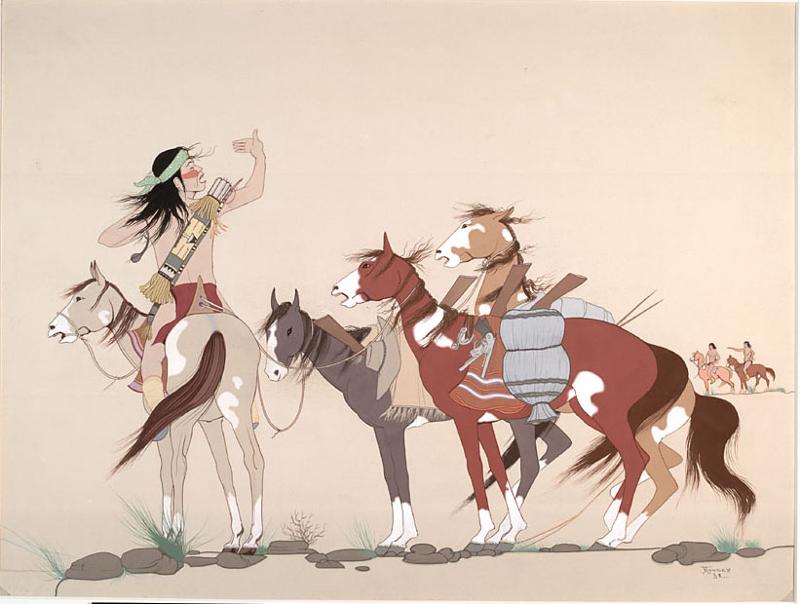Subsistence and Material Culture
All Apache were primarily hunters and gatherers, though some groups (notably the Western Apache) supplemented gathered food resources with agriculture and the Plains influenced groups, including the Jicarilla, emphasized bison hunting. All groups were either nomadic (moving every few days) or seminomadic (moving several times during the course of a year). Raiding was an important economic activity that gained in prominence after the Spaniards introduced horses into the region. Raids were an important avenue to power for Apache men, and a boy's first raid was considered his initiation into manhood.
Although the seasonal cycle varied by group, most followed something like that of the Mescalero. In early spring, the Mescalero moved with their extended family groups to areas where they could plant their corn, beans, and squash. They did not stay to tend the crops, but in late spring moved again to areas where agave could be collected and roasted. In early summer they collected cactus fruit, in the early fall they collected mesquite beans, and by mid fall they returned to their farm plots to retrieve whatever crops might be available for harvesting. Winter was spent in large base camps and was a time for raiding.

'After the Raid.' Painting by Allan C. Houser, 1938.
Source - http://sirismm.si.edu/naa/74-7/08795000.jpg
Click on next page to continue.
